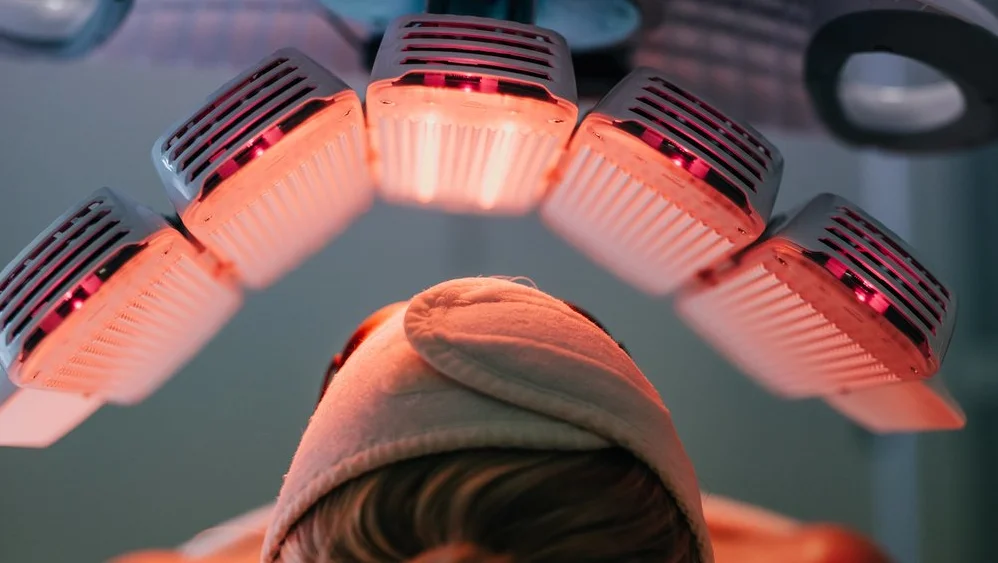Photodynamic Therapy (PDT)
Is a technique used to treat precancerous skin lesions (aktinic keratoses) and for some types superficial skin carcinomas.
(Pre)cancerous skin cells are made extremely sensitive to visible (red) light by application of a topical medical cream Metvix (a photosensitising product, that makes the skin sensitive to light) and when exposed to a light source, it will cause the (pre)cancerous skin cells to die and be replaced by new and healthy cells.
Procedure of classic PDT:
- Any excess tumor tissue is removed from the skin using curettage or a resurfacing laser
- Then a photosensitizing cream is applied, which is selectively absorbed by the (pre)cancerous skin cells, and converted into a photosensitive substance for red light.
- The skin is covered with cover foil for 3 hours, time needed for the cream to be sufficiently absorbed in the skin. The covered area should not be exposed to light.
- After 3 hours the cover is removed and the skin is cleaned.
- The skin is then exposed during 10 minutes to red LED light. The light activated the applied cream that will selectively destroy the (pre)cancerous skin cells. To protect the eyes, you will wear glasses during this exposure.
Classic PDT is the preferred technique for superficial Basalcel Carcinoma or for Morbus Bowen (Ca in situ). For extended area of actinic keratosis in face, scalp or décolletage daylight PDT may be preferred.
Daylight PDT
The (pre)cancerous skin cells are also sensitive to the red light in visible light (daylight). After applying the photosensitizing cream, the skin is simply exposed to daylight outside.
With daylight PDT one needs to stay outside for 2 hours (compared to 10 min with red LED), but the advantage is that the Daylight PDT procedure has better tolerance and is less painful compared to classic PDT.
All weather conditions are allowed, except rain and cold temperatures. Daylight PDT is usually performed from March to October.
Daylight exposure may start immediately after applying the cream, or at the latest half an hour later. The patient should be left outdoors in full daylight continuously for 2 hours. The exposed skin will be protected with a specific sunscreens that protect from UV-light without filtering red light. It is not recommended to go inside for more than a few minutes during these hours.
After PDT treatment
It is important to avoid any daylight exposure and to stay inside after PDT.
Slight pain (up to 24 hours after treatment), redness, crusting, swelling and color changes of the skin may occur during a few weeks (2-4 weeks) after treatment.
